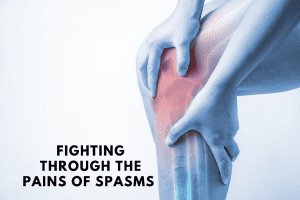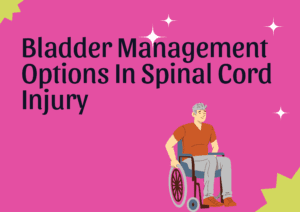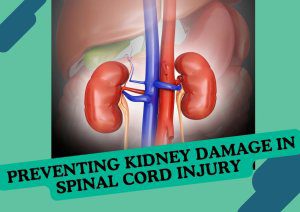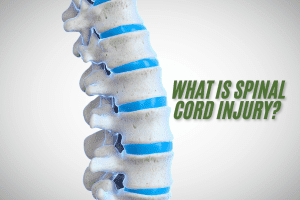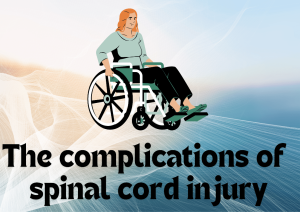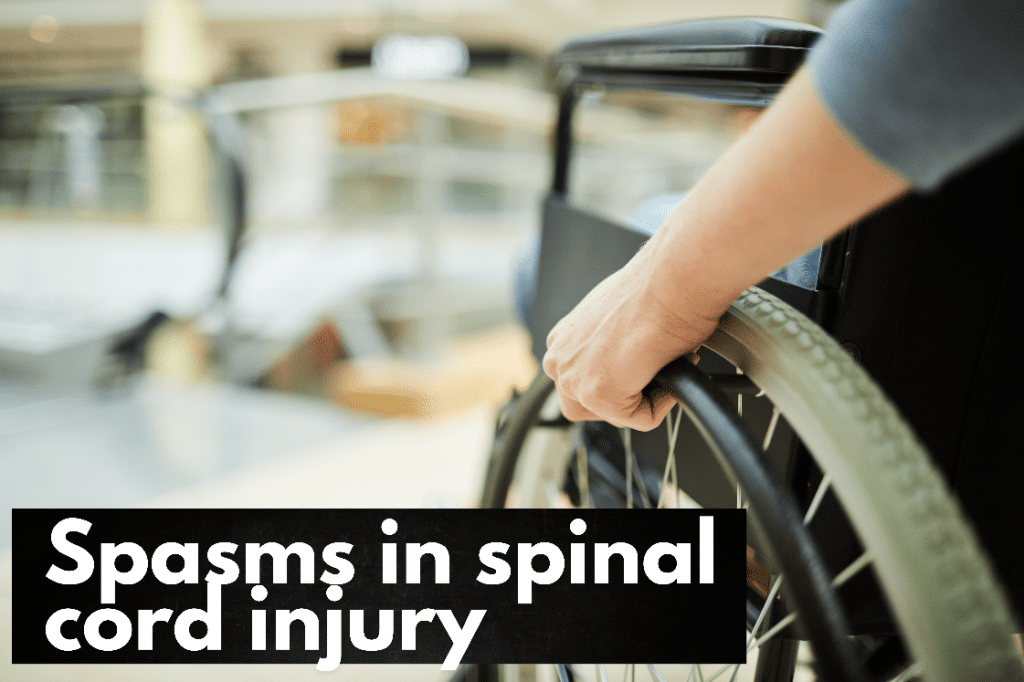
By Scihealthhub – October 28, 2024
You’re probably here because you’re wondering why you’re experiencing troublesome muscle spasms as someone living with a spinal cord injury. Or perhaps you’re in search of solutions or remedies that can help reduce these muscle spasms.
Well, you’re in the right place. In this post, we’ll discuss everything you need to know about muscle spasms in spinal cord injury, including effective and practical treatment options.
Muscle spasms are a significant challenge for people living with spinal cord injuries. They can severely impact daily functioning and make life difficult.
I had a personal experience with the torment of muscle spasms. It started with a slight fever, headaches, and feeling unwell, and later escalated into severe and frequent spasms that made life unbearable.
For more details about my experience, you may want to read From Fever to Fury: My Battle with Muscle Spasms in Spinal Cord Injury.
What is a Muscle Spasm?
A muscle spasm is a sudden, involuntary contraction in one or more muscles. It may cause the affected body part to move uncontrollably, or, in the case of a limb, to kick out or jerk toward the body.
Spasticity is a similar symptom that often coexists with spasms. It refers to the abnormal, uncontrolled tightening of muscles due to persistent muscle contraction. Typically, the muscles become stiff, heavy, and difficult to move.
Any muscle or group of muscles can be affected by spasms and spasticity, but the most common sites are the legs, arms, trunk, and back. Muscle spasms are unpredictable, ranging from mild to severe, and they can vary over time. They are often painful, uncomfortable, and bothersome.
Muscle spasms and spasticity are prevalent, especially among people living with spinal cord injuries. Over 80% of people with spinal cord injuries experience muscle spasms of varying severity (1). Among all individuals with spinal cord injuries, 25–43% report problematic spasms that hinder their daily activities (2).
What Causes Muscle Spasms?
For normal muscle movement, signals must move seamlessly along nerve pathways connecting the brain, spinal cord, and muscles.
If there is damage to the brain or spinal cord, it can disrupt the flow of nerve signals between the brain and muscles. This may result in muscle overactivity and a loss of coordination, leading to spasms and spasticity.
Conditions that can damage the brain or spinal cord and cause spasms and spasticity include:
- Spinal cord injury
- Stroke
- Cerebral palsy
- Brain injury
- Multiple sclerosis
- Amyotrophic lateral sclerosis
- Spinal cord tumor
Additionally, existing muscle spasms and spasticity in people with spinal cord injuries can be aggravated by:
- Infections, especially urinary tract infections
- Full bladder
- Pressure sores
- Constipation, impacted stool, or large hemorrhoids
- Tight clothing
- Irritants on the skin, such as ingrown toenails, rashes, or anything that is too hot, too cold, or painful
- Hidden fractures or injuries to muscles or tendons below the level of the spinal cord injury
Symptoms of Muscle Spasms in Spinal Cord Injury
The symptoms and severity of muscle spasms can vary from person to person and over time. Symptoms may include:
- Sudden, uncontrollable bending or straightening of a limb, or jerking of muscles in the legs, abdomen, back, or chest
- Tight or stiff muscles at rest
- Pain or discomfort
- Overactive muscles, where even a light touch can trigger muscle spasms
- Muscle fatigue, as spasms use a lot of energy
- Clonus, or uncontrollable, repetitive up-and-down movement, typically a constant foot tapping
- Abnormal posture
- Bone and joint deformities
What Problems Can Result from Muscle Spasms?
Muscle spasms can lead to the following problems in individuals with spinal cord injuries:
- Significant pain and discomfort
- Difficulty driving, transferring safely, or sitting properly in a wheelchair due to severe spasms
- Sleep disturbances due to repeated spasms at night
- Increased risk of falling out of a wheelchair during transfers, showering, or on uneven surfaces
- Chest spasms that may cause breathing difficulties
- Skin breakdown and pressure sores from prolonged spasms
- Permanent muscle and tendon contractures from severe, prolonged stiffness and spasms
Treatments for Muscle Spasms in Spinal Cord Injury
Muscle spasms can be distressing for individuals with spinal cord injuries, but effective treatments are available.
If you have muscle spasms and spasticity or any worsening of these symptoms that causes the aforementioned problems, consult your healthcare provider.
Since symptoms and severity can vary widely, an individualized approach to treatment is best. Your doctor can help you plan your treatments based on the severity of your symptoms, your needs, preferences, and goals.
Medical Treatments
There are effective, affordable oral medications for managing muscle spasms:
- Baclofen – considered the preferred medication for spinal cord injury spasms and spasticity
- Tizanidine
- Gabapentin
- Pregabalin
- Benzodiazepines (diazepam, clonazepam)
- Dantrolene sodium
Most of these medications work by reducing spasms and spasticity by depressing signals from the brain and spinal cord. Dantrolene, however, acts directly on the muscles to suppress spasticity and spasms.
Physical Treatments
Your doctor may recommend physical treatments as part of your overall treatment program. Physical treatments help maintain flexibility, reduce spasms, and decrease the risk of joint deformities. These may include:
- Regular Stretching (Range-of-Motion Exercises): Helps lengthen tight muscles and maintain flexibility.
- Supported Standing: Using a standing frame to allow body weight to stretch muscles.
- Cold or Heat Therapy: Temporary muscle relaxation, though care should be taken to avoid excessive heat or cold, especially on areas with reduced sensation.
- Medical Support Devices: Casts, splints, and braces can provide continuous muscle stretching.
For instance, I used both medications and stretching exercises. While lying on my back, my son or wife would bend my leg at the knee and then straighten it, repeating this about 20 times for each leg. When alone, I would lift one leg onto the bed or sofa, bend it fully at the knee, and then straighten it, repeating it up to 10 times per leg.
Additional Treatments
In rare cases, spinal cord injury spasms and spasticity may not respond to conventional treatments. Your doctor may consider the following:
Botulinum Toxin (Botox) Injections – local injection of botulinum toxin directly into the affected muscle to reduce spasms. Botox injections typically last 3–4 months and have the advantage of fewer systemic side effects (3).
Intrathecal Baclofen (ITB) Pump – for extreme cases, this involves surgically placing a pump and catheter in the abdomen to deliver baclofen directly into the spinal cord. This method reduces side effects and allows for dose adjustments but may have complications such as infection or pump failure.
In conclusion, muscle spasms are a common and challenging problem for people with spinal cord injuries. Though they may be painful and distressing, effective treatments can help manage symptoms and support a return to daily functioning.

